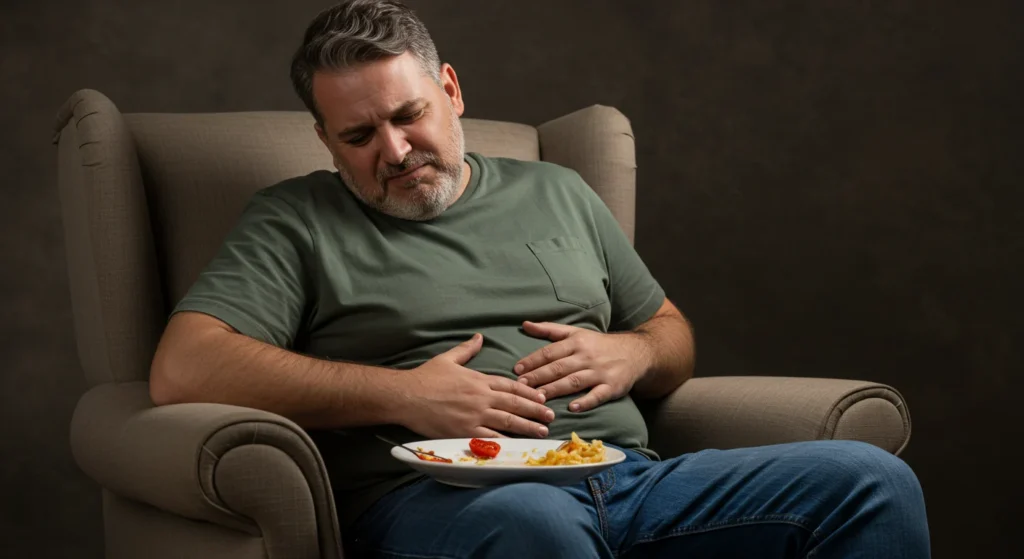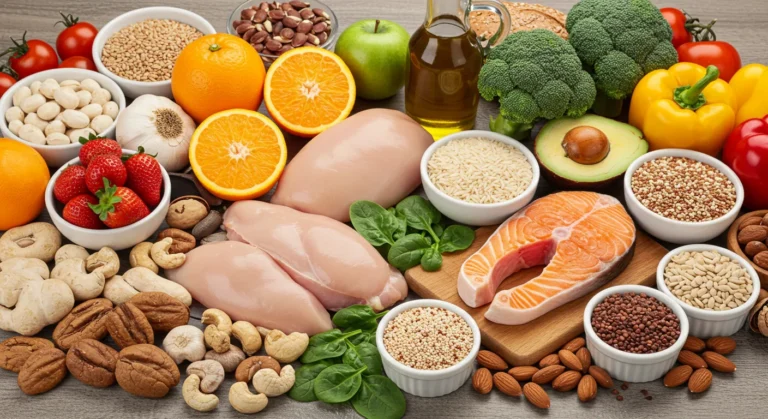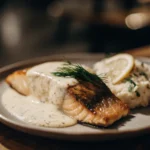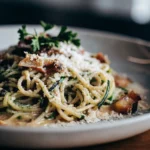Ever find yourself rummaging through the pantry, not because you’re hungry—but because you’re upset, bored, or even celebrating something? You’re not alone. Emotional eating is something so many of us experience. It’s not just about food. It’s about comfort, distraction, or reward. The tricky part is that it can quietly sabotage your health goals and leave you feeling worse than before.
In this blog post, we’ll break down why emotional eating happens, how to spot the triggers, and—most importantly—what you can actually do to regain control. Along the way, I’ll share my own experience because honestly? I eat to feel better. Whether I’m sad, angry, or celebrating something, food has always felt like a fix. But there are better ways. Let’s talk about them.

What Is Emotional Eating, Really?
Emotional eating is when you use food to soothe feelings rather than satisfy hunger. It’s eating to feel better, not to feed your body.
The Cleveland Clinic explains that emotional eating can show up as mindless snacking in front of the TV, bingeing after a stressful day, or constantly reaching for sweets when you’re sad. It’s often driven by emotions like:
- Stress
- Boredom
- Loneliness
- Anxiety
- Anger
- Happiness (yes—even joy can trigger it!)
And here’s the kicker: it becomes a habit. Your brain learns that food equals relief or reward, which can create a tough cycle to break.

The Root Cause: Emotional Triggers
To fix emotional eating, you have to understand what sets it off. Triggers vary from person to person, but they usually fall into a few big categories:
1. Stress and Cortisol
When you’re stressed, your body releases cortisol, a hormone that increases appetite—especially for high-fat, high-sugar foods. According to the American Psychological Association, stress-related eating patterns are incredibly common and often become chronic.
Real talk: For me, stress is my biggest trigger. If something frustrating happens at work, my first thought isn’t to take a walk—it’s to make nachos.
2. Emotional Suppression
Many people eat to avoid dealing with difficult feelings. Food becomes a way to push emotions down rather than process them. The National Library of Medicine notes that this kind of “emotional numbing” through food often starts in childhood and becomes more automatic over time.
3. Habitual Associations
Some emotional eating comes from patterns you’ve followed for years. Maybe growing up, your family celebrated everything with dessert, or you were given snacks when you were upset. These emotional-food connections run deep and influence your adult behavior.

Are You Really Hungry? How to Tell
One of the most powerful tools for overcoming emotional eating is learning to distinguish between physical and emotional hunger. Here’s a quick comparison:
| Physical Hunger | Emotional Hunger |
|---|---|
| Comes on gradually | Hits suddenly |
| Can wait | Feels urgent |
| Based on actual need | Triggered by emotion |
| Open to many food options | Craves specific “comfort” foods |
| Stops when full | Often leads to overeating |
| Doesn’t lead to guilt | Often followed by regret or shame |
Next time you reach for a snack, pause and ask: Am I really hungry? Or is something else going on?
My Personal Story With Emotional Eating
I used to think emotional eating just meant binging after a breakup or feeling down. But I eventually realized I was eating for every emotion. Happy? Let’s treat ourselves. Anxious? I need chocolate. Angry? Bring on the carbs. I didn’t have a way to sit with those feelings, so food filled the space.
One day, I finished an entire bag of chips after an argument. I didn’t taste half of it. I just needed to do something. That moment hit hard. I knew I wasn’t eating because I was hungry. I was eating because I didn’t know what else to do with myself.
What You Can Do to Break the Cycle
Overcoming emotional eating isn’t about willpower. It’s about strategy, awareness, and self-kindness. Here are the key steps:

1. Keep a Food + Mood Journal
Writing down what you eat, how you feel before and after, and what triggered it can reveal patterns you didn’t know existed. It helps you see the connection between your emotions and your cravings.
➡️ Tip: Try using a simple app or notebook to track it for a week. Just the act of writing can make you more mindful.
2. Practice the HALT Method
Before you eat, ask yourself: Am I Hungry, Angry, Lonely, or Tired?
This method forces you to pause and get curious about your real need. If you’re tired, maybe food isn’t the answer—a nap might be.
3. Find Non-Food Coping Alternatives
Once you spot your triggers, replace emotional eating with something else that offers comfort. Here are some ideas:
| Trigger | Alternative Activity |
|---|---|
| Stress | Deep breathing, walk outside, stretch |
| Sadness | Journal, call a friend, listen to calming music |
| Boredom | Read, doodle, clean a drawer, play a game |
| Anxiety | Do a puzzle, color, use grounding techniques |
| Happiness | Dance, share your joy with someone, take photos |
4. Create a “Comfort Toolbox”
Build a go-to list of things that soothe you but don’t involve food. This could be a playlist, a favorite YouTube channel, a soft blanket, or a warm bath.
📌 Keep this toolbox somewhere visible so when the urge hits, you’re reminded to turn to it.

5. Build in Regular Meals
Ironically, restricting food can make emotional eating worse. If you’re skipping meals or under-eating, your body will crave energy—and your brain will use any emotion as an excuse to get it.
💡 Tip: Stick to regular, balanced meals with protein, healthy fats, and fiber. This stabilizes blood sugar and reduces the chance of a binge.
6. Talk About It
Sometimes, emotional eating is rooted in deeper emotional issues—trauma, anxiety, or low self-esteem. Talking to a therapist or a registered dietitian can make a huge difference. The National Eating Disorders Association offers tools and resources that are a great starting point.
When Emotional Eating Becomes Something Bigger
Not all emotional eating is disordered, but sometimes it can develop into binge eating disorder or another eating issue. Warning signs to watch for include:
- Frequent episodes of eating large quantities of food in secret
- Feeling out of control when eating
- Using food to manage nearly every emotion
- Intense guilt or shame after eating
If this sounds familiar, consider reaching out for support. Healing is absolutely possible, and you don’t have to figure it all out on your own.

Emotional Eating vs. Intuitive Eating
You might’ve heard of intuitive eating—it’s the opposite of dieting and encourages eating based on internal cues. It also acknowledges that food can be emotional at times, and that’s okay.
But here’s the key: emotional eating becomes a problem when it’s the only way you cope. Intuitive eating welcomes emotional eating occasionally, but it also invites mindfulness, self-awareness, and compassion. The Intuitive Eating framework can be a helpful philosophy to explore if you’re tired of battling your cravings.
Quick Summary: Tips at a Glance
Here’s a table to wrap it up and help you remember the basics:
| Strategy | What It Helps With |
|---|---|
| Food & Mood Journal | Identifying emotional triggers |
| HALT Method | Pausing before reacting |
| Non-food Coping Tools | Replacing food with healthier comfort habits |
| Comfort Toolbox | Go-to alternatives when emotions hit |
| Regular Balanced Meals | Preventing hunger-driven overeating |
| Seeking Support | Addressing deeper emotional causes |
Final Thoughts
If you’ve ever felt like your emotions control your eating, you’re not broken. You’re human. Food has always been part of how we connect, celebrate, and cope. But when it becomes your only emotional outlet, that’s when the balance tips.
I’ve lived it. I still catch myself grabbing snacks when I’m overwhelmed, but I’m learning to pause, reflect, and offer myself something else—something better.
Want to start making that shift too? Pick just one strategy from this post and try it this week. That’s it. No overhaul. No guilt. Just one step forward.








